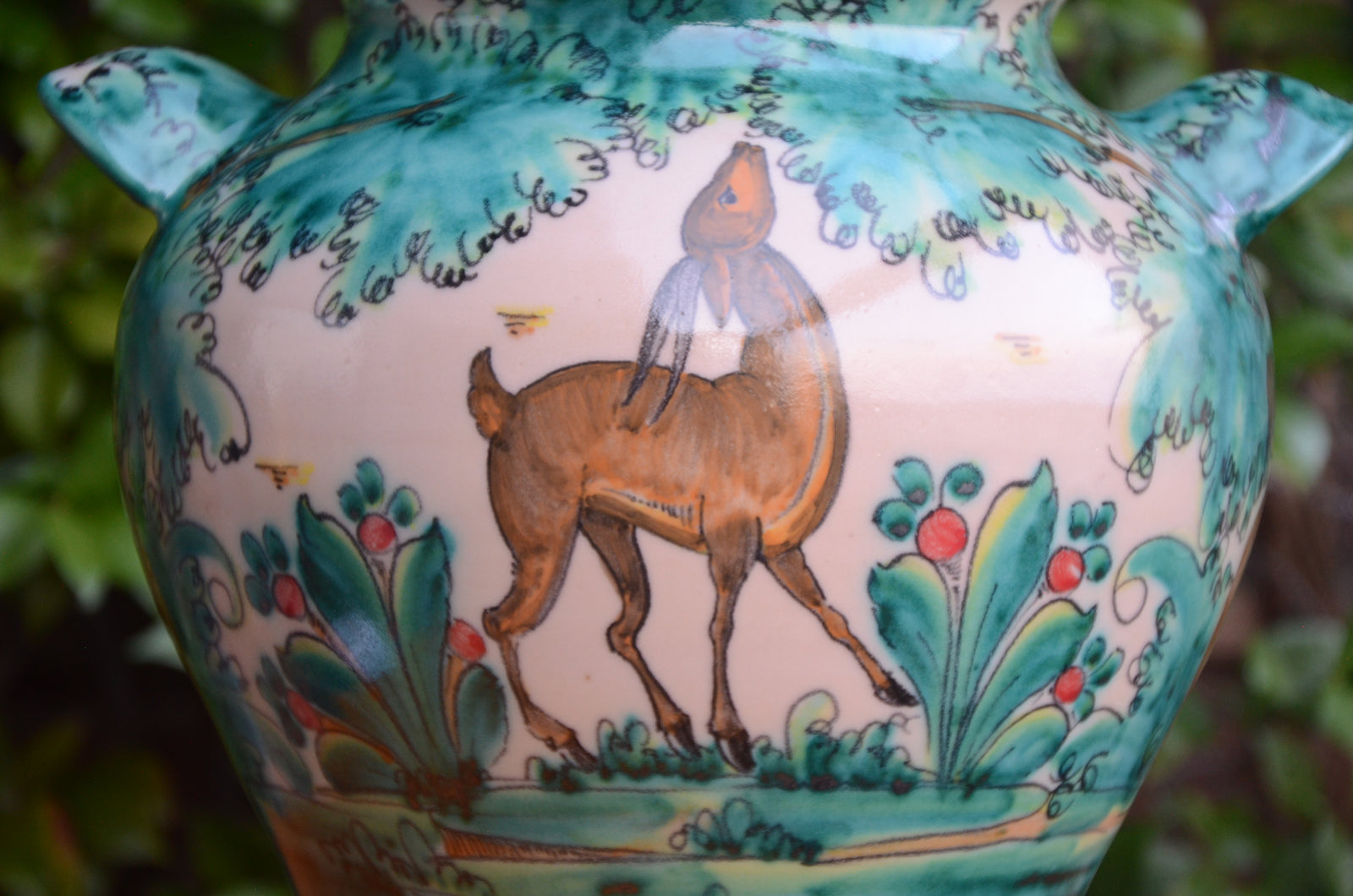
Úbeda is a city in the province of Jaén, Andalusia, Spain, which was declared, together with the next city of Baeza, World Heritage Site in 2003, due to the quality and excellent conservation of their renaissance buildings and singular XVI century town environment.
Úbeda may be today the city with most olive oil production in the World. The super productive and extensive olive tree field is the core that nurtures the activity of multiple related industries and services. His rural landscape is the most beautiful example of what is known as “the olive tree sea”: thousands of hectares full of aligned olive trees until we loose the sight in a green horizon.Until very recently these pieces were made only for daily use at home: on the kitchen, table, for use on the farms... Notably by the traditional industry in the area the pieces used to pour olive oil like the alcuzas, and also to store other kind of food like orzas or queseras –to store “queso” or cheese. The current artisans have additionally incorporated, every one with his own personal touch, new shapes and decorations, destined to a more commercial use.
The pieces are made from two kind of clay, white and red, coming from the city neighborhood. For starting, during the summer the mud is mixed with water over flat stones in order to eliminate the stones and other impurities and produce a dough ready to be knead. Then the pieces are shaped on the lathe, aired, and then painted with what would make the final color: for the green a mix of copper oxide and white mud from another city called Villa del Marqués; for the brown the red clay or “limonja”, and for the white a white mud called “land from Viso”. The brightness on the surface is a vitrification process performed with galena after the baking. Finally the pieces are ready to get into the local kind of oven called “hispanomoriscos”, fed with olives “orujo” or core bones and other waste from the olive oil industries, were they would stay for 24 to 30 hours, which is the most critical part of the overall process.Comments will be approved before showing up.

